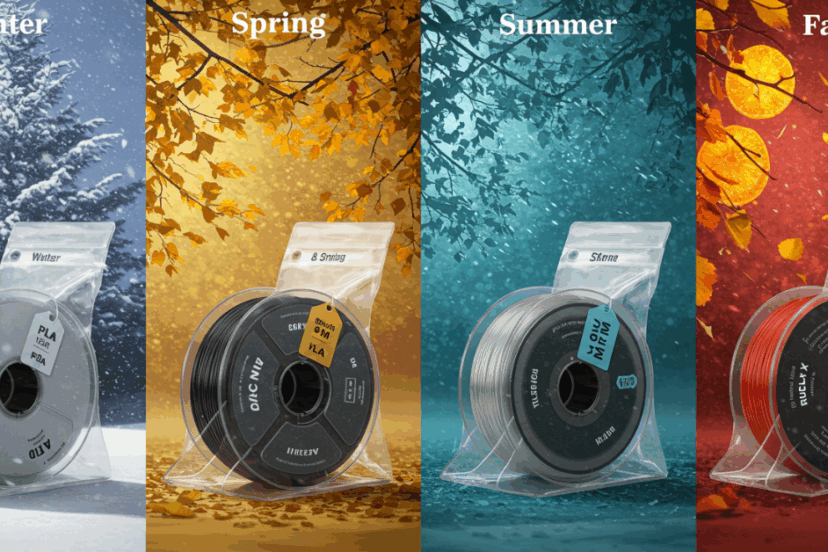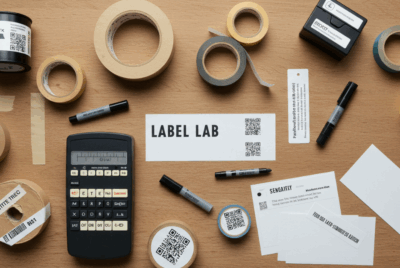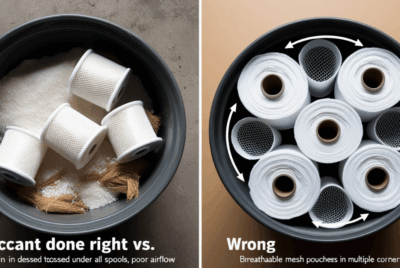How Long Can Filament Be Stored in Vacuum-Sealed Bags Without Losing Quality?
Filament storage, especially in vacuum-sealed bags, is a great way to preserve the quality and integrity of your 3D printing materials over time. However, the length of time filament can be stored without losing quality depends on several factors, such as the type of filament, the environment it’s stored in, and the quality of the vacuum seal. Here’s a closer look at how long you can store filament in vacuum-sealed bags without compromising its performance:
1. Ideal Storage Duration for Different Filament Types
- PLA (Polylactic Acid):
- Storage Time: 6 months to 1 year.
- Reason: PLA is relatively stable and doesn’t absorb moisture as quickly as some other filaments. When vacuum-sealed and stored in a cool, dry place, PLA can last for up to a year without significant degradation.
- Considerations: Although PLA is less moisture-sensitive, it can still degrade over time, especially if exposed to humidity. Vacuum sealing helps mitigate this risk, but it’s still best to use PLA within a year for optimal print quality.
- ABS (Acrylonitrile Butadiene Styrene):
- Storage Time: 1 to 2 years.
- Reason: ABS is more durable and less susceptible to moisture absorption compared to PLA. When vacuum-sealed, it can retain its quality for a longer period, making it ideal for long-term storage.
- Considerations: ABS should be stored in a cool, dry place away from UV light, as prolonged exposure to sunlight can cause color fading and make the filament brittle over time.
- Nylon:
- Storage Time: 6 months to 1 year (with frequent drying).
- Reason: Nylon is highly moisture-sensitive, and if it absorbs too much moisture, it can lead to print quality issues like bubbling and weak adhesion. Vacuum-sealing prevents moisture absorption, but it’s essential to dry the filament before use if it’s been stored for a long time.
- Considerations: Even in a vacuum-sealed bag, Nylon should be checked periodically and dried if necessary. Proper storage can extend its shelf life, but moisture remains a constant concern.
- TPU (Thermoplastic Polyurethane):
- Storage Time: 6 months to 1 year.
- Reason: TPU is also sensitive to moisture, which can cause it to become too soft, leading to inconsistent extrusion or print failures. Vacuum sealing helps protect TPU from moisture, but like Nylon, it’s a good idea to dry the filament before use if it’s been stored for a long period.
- Considerations: Similar to Nylon, keeping TPU dry is essential for maintaining its flexibility and printability.
- PETG (Polyethylene Terephthalate Glycol):
- Storage Time: 1 to 2 years.
- Reason: PETG is less prone to absorbing moisture than Nylon or TPU, and vacuum sealing helps preserve its quality for extended periods. If stored properly in a vacuum-sealed bag, PETG can last up to two years without significant quality degradation.
- Considerations: Although moisture absorption is less of a concern, it’s still important to store PETG in a dry place to avoid any risk of deterioration over time.
2. Environmental Factors That Affect Filament Storage
While vacuum sealing is highly effective in protecting filament, other environmental factors can still influence how long it can be stored without losing quality:
- Temperature:
- Storing filament in a cool, dry environment is crucial. High temperatures can cause the filament to soften or deform over time, even inside a vacuum-sealed bag. Ideal storage temperatures range from 15°C to 25°C.
- Extreme cold can also cause the filament to become brittle, especially PLA and Nylon, which are more sensitive to temperature fluctuations.
- Humidity:
- While vacuum sealing significantly reduces the risk of moisture absorption, it’s still important to store the sealed bags in a low-humidity environment. High humidity can degrade the vacuum seal and, over time, allow moisture to re-enter the bag.
- Humidity levels between 40% and 60% are optimal for filament storage, even inside vacuum-sealed bags.
- UV Light:
- Prolonged exposure to UV light can cause filament to degrade, become brittle, and lose color. Vacuum-sealed bags provide some protection from UV light, but it’s still important to store the bags in dark, cool places to prevent degradation.
3. Signs of Filament Degradation After Long Storage
Even if vacuum-sealed, it’s a good idea to check your filament periodically for any signs of degradation. Here are some things to look for:
- Visible Bubbles or Clumping: If filament shows signs of bubbling when printed, it may have absorbed moisture, despite being vacuum-sealed. This is particularly true for moisture-sensitive filaments like Nylon and TPU.
- Brittleness: Filament that has become brittle or cracks easily is likely to have degraded over time. This can happen if the filament was exposed to heat or UV light during storage.
- Inconsistent Extrusion: If you notice inconsistent extrusion, stringing, or poor adhesion, the filament may have absorbed moisture, even if vacuum-sealed. Try drying the filament to see if the quality improves.
4. Best Practices for Maximizing Filament Shelf Life
To ensure the longest possible shelf life for vacuum-sealed filament, follow these best practices:
- Store in a Cool, Dry Place: Keep the vacuum-sealed bags in a temperature-controlled environment, away from direct sunlight, heat, or moisture.
- Use Desiccants: Add silica gel packets or other moisture-absorbing materials inside the vacuum-sealed bags to help maintain a dry environment.
- Check Filament Periodically: Even vacuum-sealed filament should be checked every 6 to 12 months for any signs of degradation or moisture absorption. Dry the filament before use if necessary.
- Avoid Frequent Opening: Every time you open a vacuum-sealed bag, there’s a chance that moisture or contaminants could enter. Try to only open bags when you need to use the filament and reseal them immediately after.
Conclusion
In summary, vacuum-sealed bags are a great way to store filament for extended periods, with a general shelf life of 6 months to 2 years depending on the filament type. PLA and PETG can typically last longer in vacuum-sealed bags compared to moisture-sensitive filaments like Nylon and TPU, which may require occasional drying. By following proper storage practices and regularly checking the filament for signs of degradation, you can significantly extend the shelf life and maintain the quality of your 3D printing materials.




